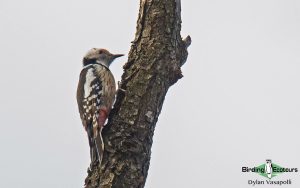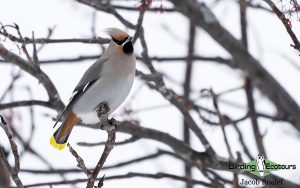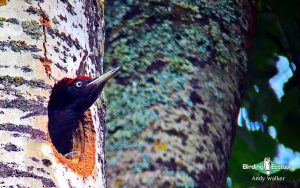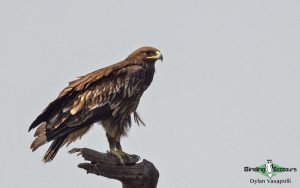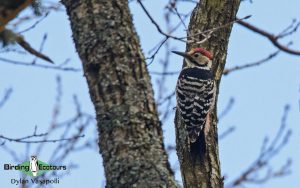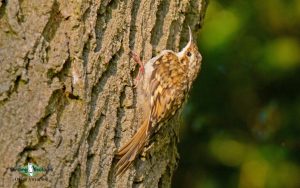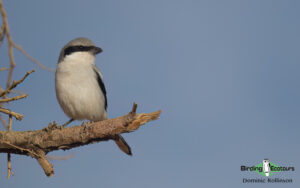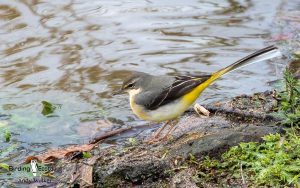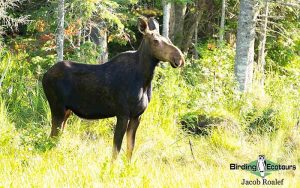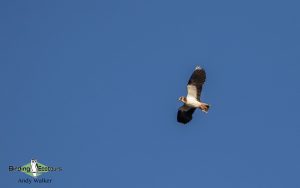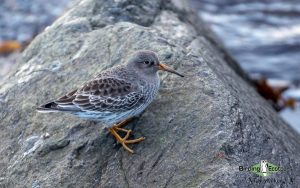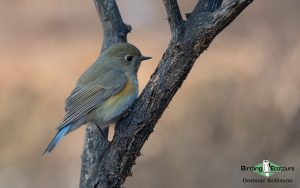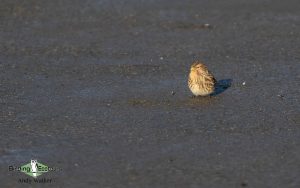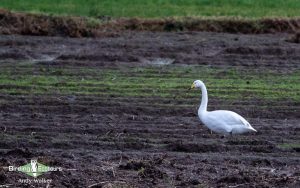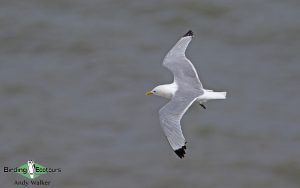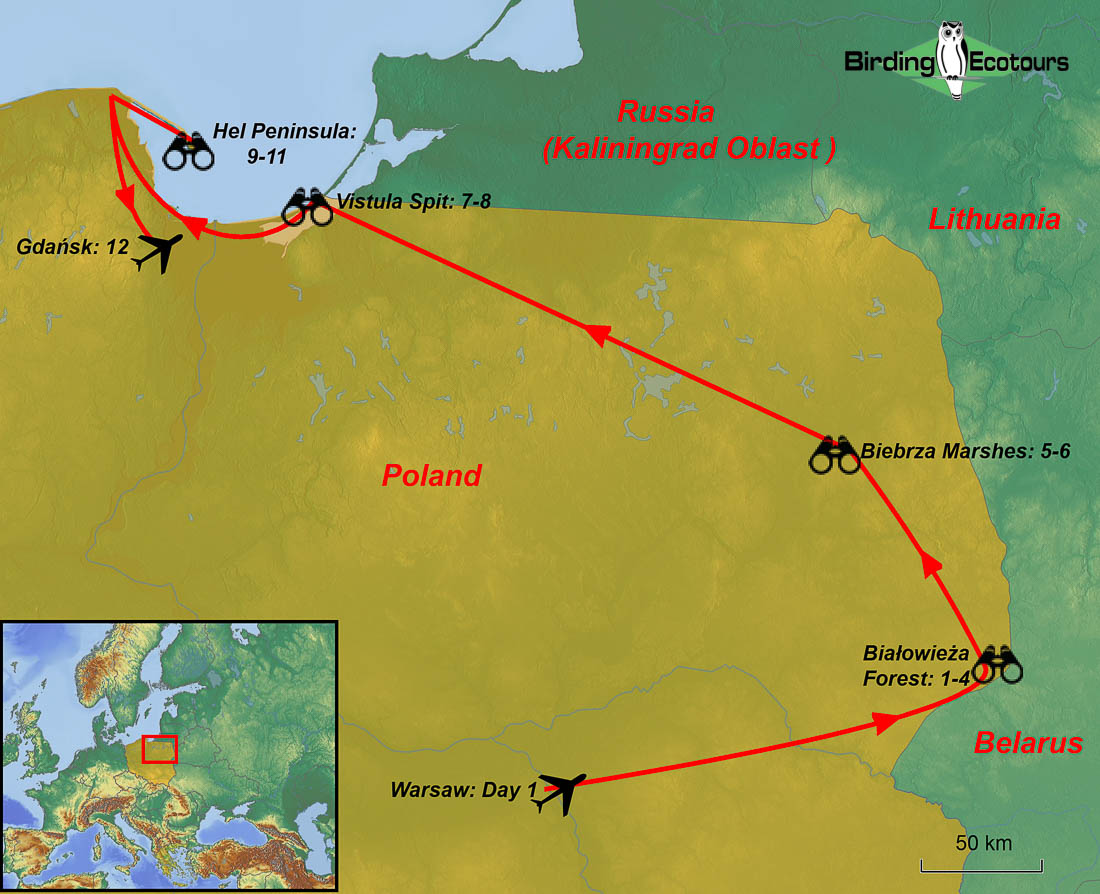Poland: Birding the Baltic Coast and East in Fall
Poland: Birding the Baltic Coast and East in Fall
Eastern Poland is another of Europe’s premier birding locations. Traditionally, tours take place in the spring (such as our Poland: Best of Eastern Europe tour) however, to only visit then would be to miss out on the wonderful spectacle that is Poland in fall. This small group tour will take in the key sites in the east of the country, ranging from primeval forests, vast marshlands and lakes, and the wild coastline of the Baltic Sea. Eastern Poland really gives a feeling of stepping back in time and we will get to experience the unique cuisine and culture of this fascinating part of Europe. This is a brand-new, exclusive, and exciting tour!
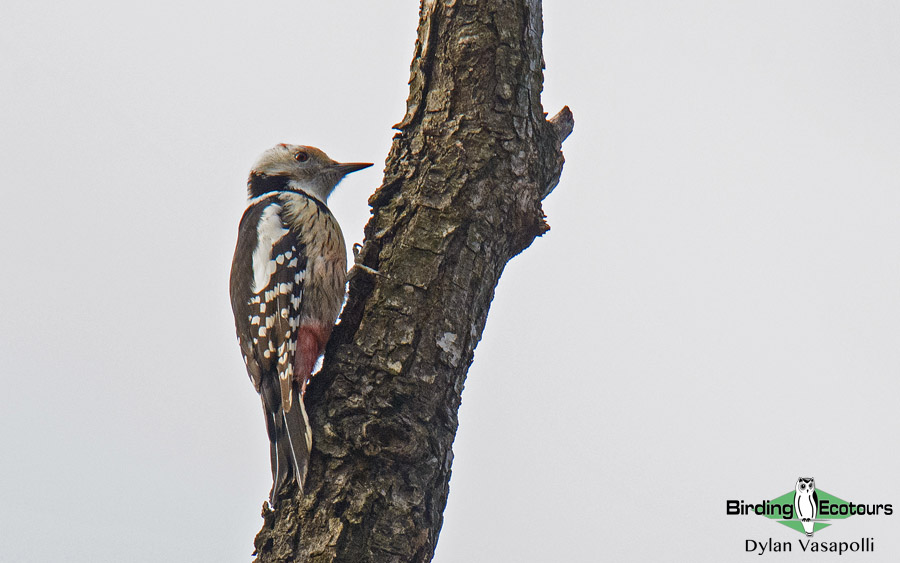
Poland is an incredibly productive country for birding. According to International Ornithological Congress (IOC) taxonomy (v13.1 in July 2023) the bird list of Poland stands at 485 species, with many of these being highly sought-after by birders from all over the world. The opportunity to see most of Europe’s woodpeckers, a decent mix of owls, some amazing raptors, plenty of shorebirds, rare and interesting passerines, and vast numbers of wildfowl makes this a ‘must see’ destination, especially at this time of the year.
The start of our tour will see us explore ancient forests for cryptic and mysterious forest specials like Hazel Grouse and Spotted Nutcracker, plus a variety of woodpeckers including Eurasian Three-toed Woodpecker, Middle Spotted Woodpecker, Grey-headed Woodpecker, Black Woodpecker, White-backed Woodpecker, and Lesser Spotted Woodpecker.
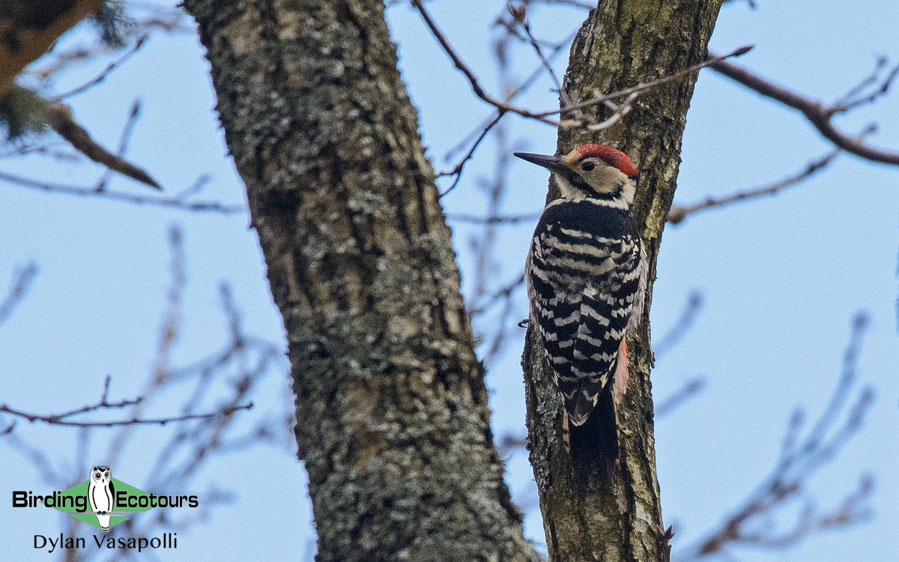
Whilst on the coast we should see large numbers of waterbirds such as Whooper Swan, Common Crane, Common Goldeneye, Common Pochard, Tufted Duck, Smew, Greater Scaup, Common Merganser (Goosander), Velvet Scoter, Tundra Bean Goose, Black-throated Loon (Diver), and Horned (Slavonian) Grebe.
Another feature of this coast, and the lakes just inland, are the migrating flocks of shorebirds (waders) present, including scarce species like Spotted Redshank and Purple Sandpiper, we may even stumble across the elusive Jack Snipe. Gulls can also move in large numbers here, with highlights being Great Black-backed Gull and Caspian Gull, a species which is very much restricted to eastern Europe. We will also check coastal waterways for the dazzling Common Kingfisher and the interesting White-throated Dipper.
During the tour we will keep a watchful eye out for a range of birds of prey and owls including White-tailed Eagle, Hen Harrier, Western Marsh Harrier, Greater Spotted Eagle, Rough-legged Buzzard, Eurasian Goshawk, Eurasian Eagle-Owl, and Eurasian Pygmy Owl.
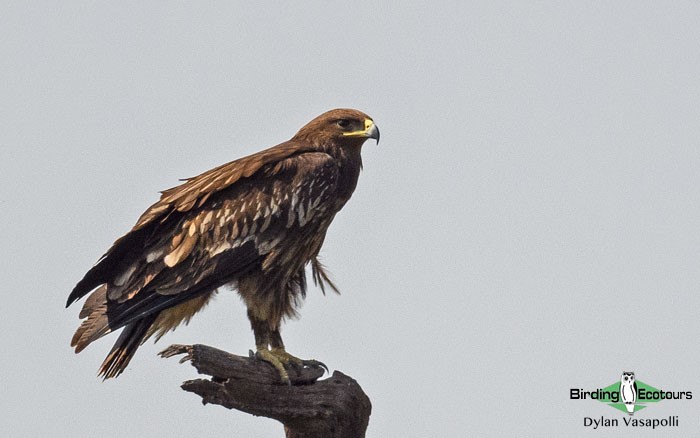
We will also come across resident and migrating passerines including, European Crested Tit, Hawfinch, Eurasian Penduline Tit, Great Grey Shrike, Willow Tit, Bearded Reedling (Tit), Black Redstart, Brambling, Twite, European Rock Pipit, and much scarcer species from the east like Red-throated Pipit, Yellow-browed Warbler, and Common (Siberian) Chiffchaff, plus the possibility of something even rarer, maybe Pallas’s Leaf Warbler, or some other eastern gem. This is a seriously exciting time to be birding in northeastern Europe!
Finally, we stand a good chance of seeing some of eastern Poland’s special mammals. Fall is the best time of year to look for Grey Wolf as they roam around the ancient forests in search of prey. Other large mammals here include European Bison, Eurasian Lynx, Moose (Elk), Eurasian Beaver, Eurasian Red Squirrel, and the odd-looking Raccoon Dog.
During the tour we will visit several Important Bird Areas (IBAs), these are sites identified by BirdLife International due to their value to the conservation of key bird species. IBAs we will visit include Białowieża Forest, Siemianowka Reservoir, Biebrza River Valley, Knyszyn Forest Lakes, Dobskie Lake (in the Mazurian lakelands, a remote region with over 2,000 lakes and its own dialect of Polish!), Vistula Spit, Vistula Lagoon, and Hel Peninsula, one of the top migration hotspots in all of Europe.
This tour starts in the Polish capital Warsaw and ends in the northern city of Gdańsk on the Baltic Sea coast. Both cities have an interesting past and are worth exploring in their own right.
If you cannot make the dates of this set departure tour, we can easily arrange a customized bird holiday in Poland for you at any time of the year, please get in touch with the dates you would like to travel and we will gladly put something together for you.
Itinerary (12 days/11 nights)
Day 1. Arrival in Warsaw, transfer to Białowieża Forest
After your morning arrival at Warsaw Chopin Airport, you will be met by your Birding Ecotours tour leader and expert Polish local bird guide. We will then transfer, in a comfortable minibus, to the ancient forest of Białowieża in Eastern Poland. This journey will take around three hours, as we drive east across Poland’s vast central region. Please ensure you arrive in Warsaw prior to 10am when our tour will start. If you need to arrive the day before the tour starts or would just like to arrive early to soak in the historic capital of Poland, we can help arrange additional accommodation and recommend excellent museums and places to visit in Warsaw.
As this is the first day of the tour you may be tired after your long journey. You can relax in our beautiful guest house, our base for the first four nights of this tour, in the heart of the forest or explore the village of Białowieża itself which is populated with common forest birds such as Eurasian Collared Dove, Great Spotted Woodpecker, Eurasian Jay, Great Tit, Mistle Thrush, and Eurasian Nuthatch. We will have a traditional Polish evening meal at the hotel as a welcome for everyone, where we will discuss the trip and get to know each other ahead of what is sure to be a fantastic birding tour in Poland.
Overnight: Guest house in Białowieża village
Days 2 – 4. Birding Białowieża Forest
We will spend the first three full days of the tour exploring the mighty and ancient Białowieża Forest IBA, one of Europe’s top birding destinations. Białowieża Forest was formed 11,000 years ago after the last Ice Age and has been a primeval wilderness for millennia. A quarter of the forest was destroyed during World War Two, but a huge area remains, much of it in neighboring Belarus. While in the forest, we will visit several key sites, including the exclusive Białowieża Strict Reserve, access is only allowed with a local guide and we will thoroughly enjoy our visit here, learning about the forest and its relevance and importance through history.
Birding in fall here is quite different to the spring as the range of species is very different, with a wide range of quality species on offer. Woodpeckers are the order of the day in the Strict Reserve and the fall is a great time to observe them due to the reduced foliage, with Eurasian Three-toed Woodpecker, Black Woodpecker, Middle Spotted Woodpecker, White-backed Woodpecker, Great Spotted Woodpecker, Lesser Spotted Woodpecker, and European Green Woodpecker all possible. Other species we could find here include Northern Raven, Eurasian Bullfinch, Yellowhammer, White-tailed Eagle, and Goldcrest, plus many others.
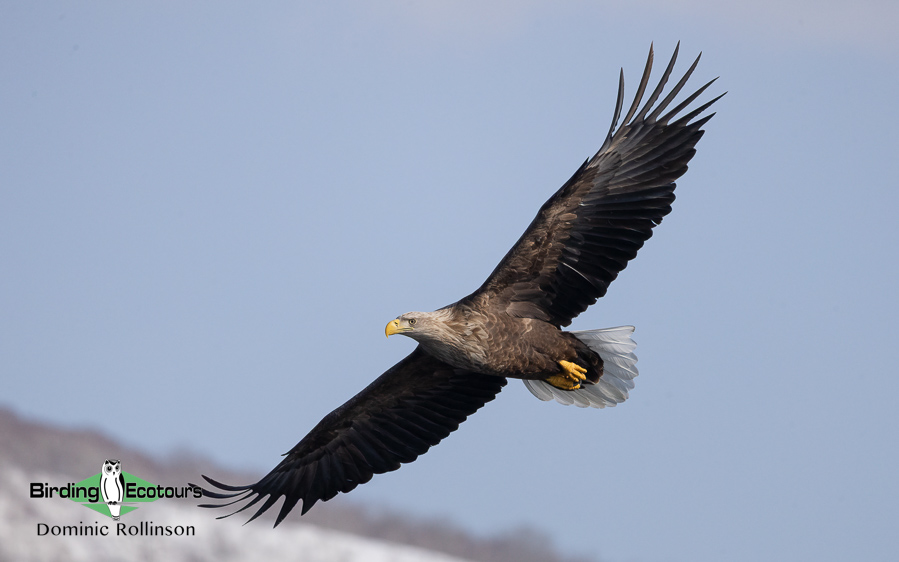
The village of Budy, in the remote east of the country, is another excellent place to look for the aforementioned woodpeckers, but we should also find species that prefer open pastures and scattered trees here, with Redwing, Fieldfare, European Robin, Meadow Pipit, Common Redpoll, and Red (Common) Crossbill all likely. This is one of the preferred foraging areas for the huge, and rare European Bison and we will look out for them as they would be a good candidate for best mammal of the tour!
Woodland on the border with Belarus, just east of Białowieża village should give us a few species we may not find elsewhere in the forest such as Grey-headed Woodpecker, Coal Tit, European Crested Tit, Willow Tit, and Hawfinch. There is always a chance of Bohemian Waxwing occurring anywhere in this area too, possibly one of the best-looking birds in Europe.
As we move deeper into the forest, we will start to come across the area’s most mysterious and special species. By moving quietly along forest trails we might spot the elusive Hazel Grouse scurrying along the forest floor, while above us Spotted Nutcracker can be found atop the large trees here. A drive at night should give us some of the forest’s special owls as well, with Tawny Owl and Eurasian Pygmy Owl the most common, although the latter can also regularly be seen in the day. These night drives should also give us our best chance of seeing the rare (European) Grey Wolf and October is the best month to see this mystical mammal in the forests.
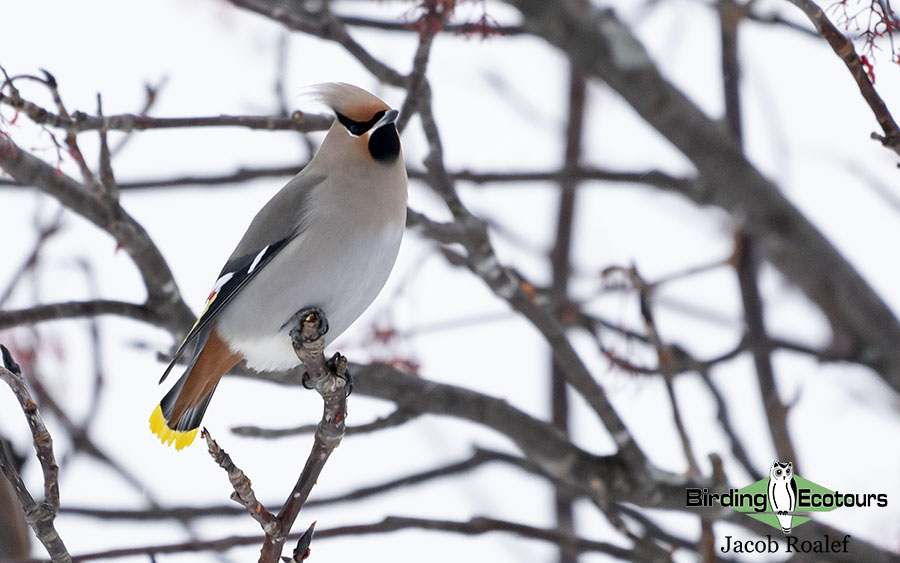
Not too far from our base in Białowieża is the huge Siemianówka Reservoir. We will visit this excellent birding site, located along the Belarus border, where we can expect numerous fantastic birds on the reservoir itself or the adjacent farmland and woodland patches. Literally anything can turn up here at this time of the year so it will be a thrilling birding session.
Like other sites, the Siemianówka area has several regular species and we should have little problem finding common species like Greylag Goose, Gadwall, Mallard, Eurasian Wigeon, Eurasian Teal, Northern Lapwing, Black-headed Gull, Common Kestrel, Western Marsh Harrier, Eurasian Magpie, Common Kingfisher, and Common Reed Bunting.
However, we will also get to enjoy the sheer variety on offer in this wild area. The migration situation during the year of the tour will depend heavily on prevailing weather conditions, and that will determine exactly what wildfowl are present, but interesting species found here could include Whooper Swan, Barnacle Goose, Greater White-fronted Goose, Common Goldeneye, and Great Crested Grebe. Shorebird (wader) migration will also be ongoing, and some key species found on the reservoir include Common Ringed Plover, Common Snipe, Eurasian Curlew, Spotted Redshank, Common Greenshank, Ruff, Jack Snipe, Sanderling, Dunlin and even rarities from east and west, such as Temminck’s Stint and Pectoral Sandpiper.
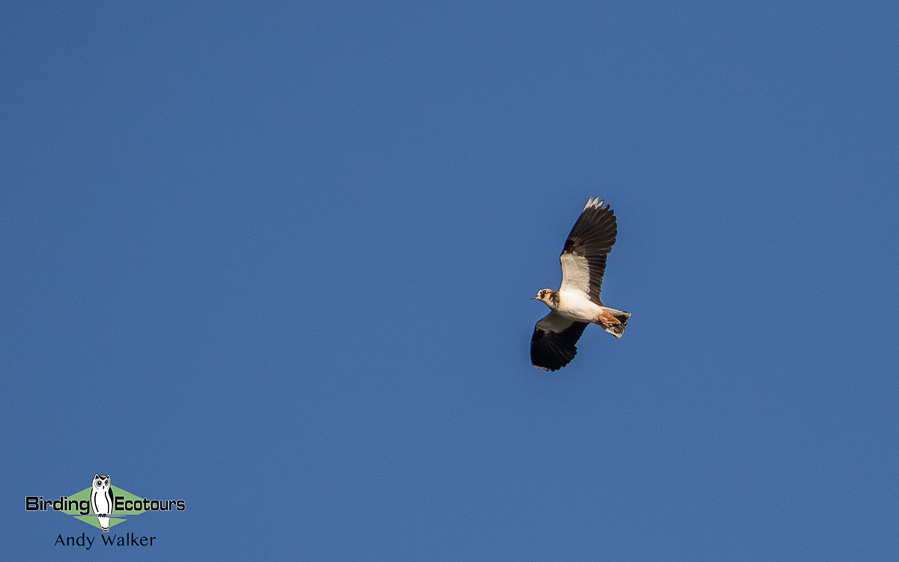
Many species use the reservoir as both a migratory stopover and wintering site. Our visit should be timed nicely with the mass migration of Common Cranes which will be a fantastic experience. Large numbers of gulls also use the area and species like Lesser Black-backed Gull, Mew (Common) Gull, and Caspian Gull should be here in numbers. The reservoir margins offer a variety of habitats which provide migrating and resident passerines alike, the chance of finding food and shelter during the colder months. Key species of note include Bearded Reedling (Tit), Great Grey Shrike, Common Chiffchaff, Long-tailed Tit, Eurasian Siskin, and rarities like Red-throated Pipit, Horned (Shore) Lark, and Twite.
Overnight (three nights): Guesthouse in Białowieża village
Day 5. Transfer to Biebrza via Knyszyn fishponds
We begin the day by reluctantly leaving Białowieża for the final time and heading north towards the beautiful Biebrza River Valley and its adjacent marshes. Along the route we will stop at the bird-rich Knyszyn fishponds where we can catch up on species that we may have missed at Siemianówka (or improve our views of some of them), and look for new species for the trip.
This area of lakes is packed full of wintering and migrating wildfowl and we should see good numbers of Greylag Goose, Mute Swan, Whooper Swan, Greater White-fronted Goose, Eurasian Wigeon, Northern Pintail, Common Goldeneye, Northern Shoveler, Mallard, Eurasian Teal, and Common Merganser (Goosander). The main feature here is the number of shorebirds (waders). Vast flocks of Northern Lapwing and European Golden Plover will populate the lake margins while smaller numbers of Grey Plover, Ruff, Dunlin, and Common Snipe are also found here.
The variety of small birds attracts birds of prey and we could find Eurasian Sparrowhawk, White-tailed Eagle, and Common Buzzard hunting in the area. We will look for clues given by the shorebirds and wildfowl to the presence of these predators! The ponds here attract plenty of gulls, with Caspian Gull being likely and the much rarer Pallas’s Gull also frequently recorded here in fall. Finally, the reeds, scrub, and wooded surrounds of the ponds attract passerines such as Bearded Reedling (Tit), Goldcrest, Yellowhammer, Common Reed Bunting, Great Grey Shrike, Woodlark, Redwing, Common Linnet, Brambling, Eurasian Bullfinch, Eurasian Tree Sparrow, and Black Redstart.
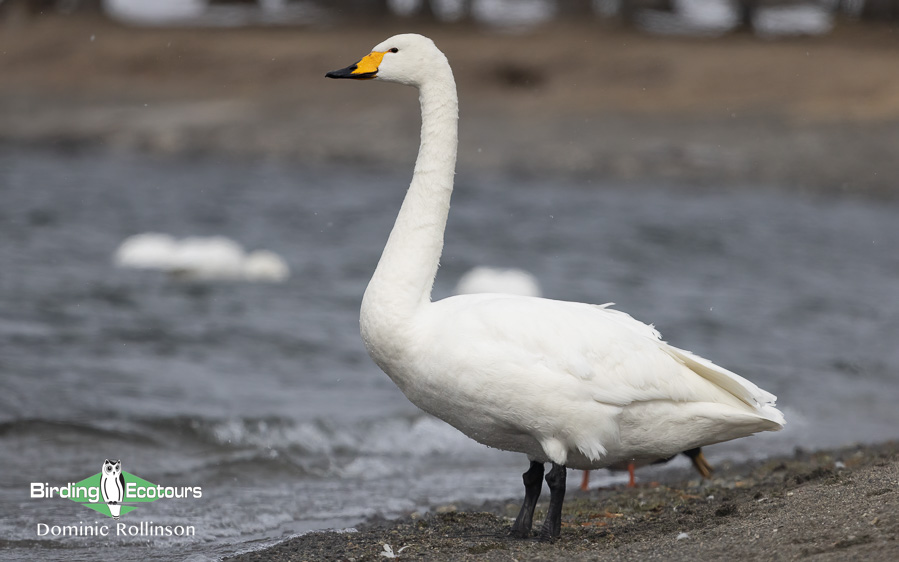
From Knyszyn we will continue north to Biebrza. This vast marshland area around the Biebrza River is one of eastern Europe’s premier birding locations. Upon arrival in the afternoon, providing the weather is agreeable, we will head to a roosting location for Common Crane and watch as they arrive to spend the night, their resonating call filling the fall air which is a simply magical experience and one to savor.
Overnight: Biebrza Marshes
Day 6. Birding Biebrza Marshes
We will spend the entire day exploring the superb Biebrza Marshes, focusing on the lower basin south of the town of Goniadz. In the marshy grasslands of Biebrza, we will observe hundreds of Northern Lapwing and European Golden Plover together with passerines like Fieldfare and Common Starling. We should also come across wintering birds of prey, such as Merlin, Hen Harrier and Rough–legged Buzzard, which join the resident Common Kestrel and Common Buzzard at this time of the year. This is also a good time of the year to spot migrating birds of prey, like Western Marsh Harrier and Greater Spotted Eagle, which take advantage of the vast array of prey on offer, before continuing to their African or Asian wintering grounds.
These grasslands also hold plenty of other top birds and while here we may come across Meadow Pipit, Yellowhammer, Eurasian Skylark, Woodlark, White Wagtail, Eurasian Tree Sparrow, Common Reed Bunting, Northern Raven, Eurasian Magpie, Eurasian Jay, Western Jackdaw, Hooded Crow, and Stock Dove. With luck we may also hear Eurasian Eagle-Owl calling from these areas at dusk and we will hope to see this secretive large owl.
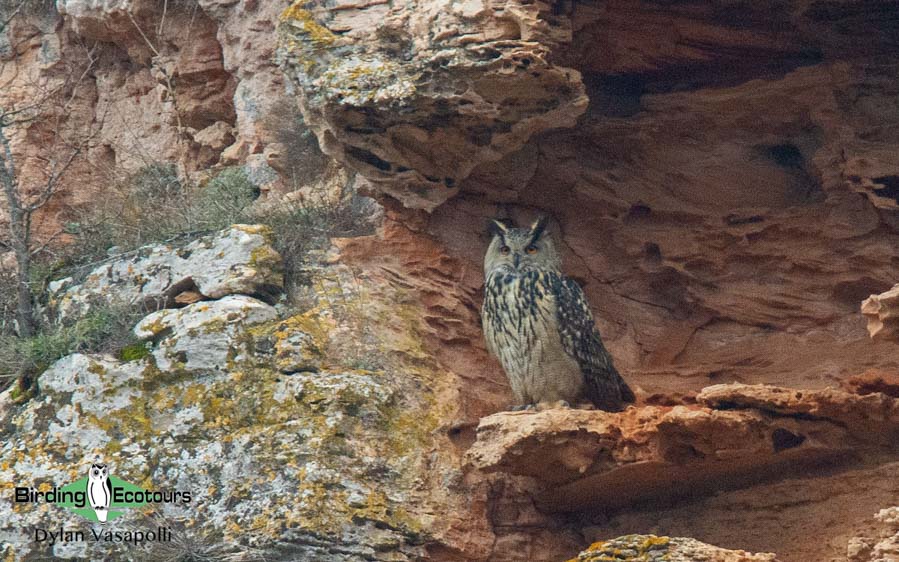
Woodlands in Biebrza can be productive at this time of year and there is a variety of exciting species on offer. These woodlands should hold good numbers of Coal Tit, Marsh Tit, Great Tit, Goldcrest, Eurasian Treecreeper, Eurasian Wren, Mistle Thrush, Common Blackbird, Common Chaffinch, Brambling, Eurasian Bullfinch, European Goldfinch, European Greenfinch, and Eurasian Blue Tit. Scarcer species we may come across here include Eurasian Siskin, Hawfinch, European Crested Tit, Dunnock, Willow Tit, and Red (Common) Crossbill.
All of the above species are hunted by resident Eurasian Sparrowhawk and Eurasian Goshawk, which we will look out for. Passing migrants should not forget about the many Great Grey Shrikes of the area, these “butcher birds” make the most of the number of passage and overwintering passerines (and even some non-passerines like small shorebirds) which visit Biebrza every year, upon which they feast!
Additionally, the woodlands will hopefully give up their stunning woodpecker residents with Black Woodpecker, Great Spotted Woodpecker, Lesser Spotted Woodpecker, Middle Spotted Woodpecker, and Grey-headed Woodpecker all realistic targets here.
The marshes are also home to both Moose (Elk) and Eurasian Beaver, either of which would prove exciting bonuses on the tour. It is certain to be an exciting and action-packed day.
Overnight: Biebrza Marshes

Day 7. Transfer to Vistula Spit (Baltic coast) via the Mazurian Lakelands
Today we will leave the Biebrza area and once again head north, this time towards the Baltic coast. We will break up our five-hour journey by stopping in the beautiful Mazurian Lakelands, an area in northeast Poland with over 2,000 lakes. In fall the area is teeming with large flocks of waterfowl and we will take time to scan these flocks carefully.
The flocks will primarily be made up of large numbers of Common Pochard, Tufted Duck, Common Goldeneye, Mallard, and Common Merganser (Goosander). Within these flocks we may find smaller numbers of Smew (a stunning species), Gadwall, Eurasian Teal, and Eurasian Wigeon. The lakes are also a good area to find big flocks of Great Crested Grebe and with luck, we may also find wintering Black-throated Loon (Diver) too. There should also be a supporting cast of delightful passerines that we have seen elsewhere on the tour.
After exploring the Mazurian Lakelands, we will continue north to the Baltic coast, where we will spend the final part of our tour, visiting yet more excellent birding sites.
Overnight: Krynica Morska
Day 8. Birding Vistula Spit
We begin our time on the Baltic coast by exploring the wild, remote and bird rich Vistula Spit. This narrow sandspit, which at its widest is only 1.1 miles (1.8 kilometers) wide, was formed by wind accumulating vast quantities of sand in this very shallow part of the Baltic Sea. Over time, this sand built up into the vast dune system present today, with some dunes reaching 82 feet (25 meters) high.
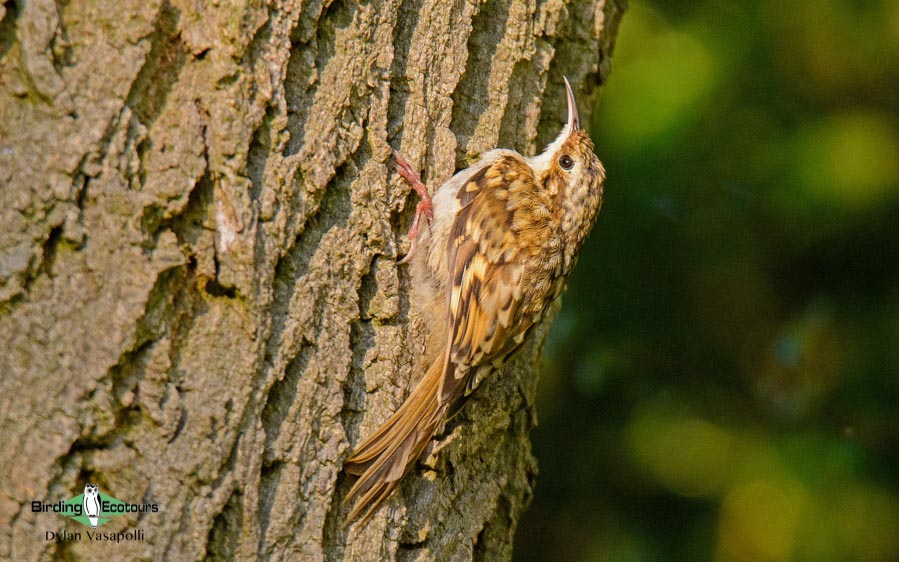
We will begin our birding here by visiting the Drapolicz Tower (drapolicz literally translates to raptor count), the best place in Poland to witness migration during the spring and fall seasons. As the name suggests, the highlight here is the bird of prey migration and we will hopefully witness good numbers of migrating Eurasian Sparrowhawk, Eurasian Goshawk, Common Buzzard, Peregrine Falcon, and Merlin. Rarer birds of prey seen here include Hen Harrier, White-tailed Eagle, and Rough-legged Buzzard. We should also get to see high numbers of Western Jackdaw, Rook, Hooded Crow, and Common Wood Pigeon migrating overhead, this visible migration is a special sight to observe.
The bushes around the watchtower should also be crawling with passerines that have stopped here on their migration south. Typical species like Eurasian Treecreeper, Goldcrest, Eurasian Blue Tit, Common Chiffchaff, European Robin, Common Chaffinch, and Long-tailed Tit could also be joined by scarcer species like Brambling, Eurasian Bullfinch, Eurasian Siskin, Hawfinch and Red (Common) Crossbill. The real prize for scanning these birds is the chance of finding a real eastern special like the stunning Pallas’s Leaf Warbler, Red-flanked Bluetail, or Yellow-browed Warbler, a potential bonus of our visit here.
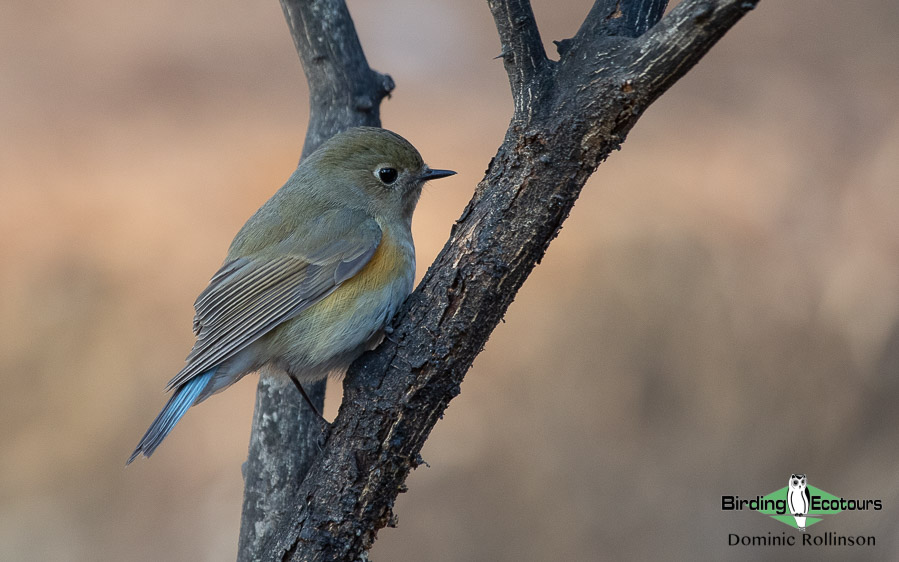
In the afternoon we will visit the mouth of the Vistula River, which is an excellent area for finding migrating shorebirds (waders). Here we can find Sanderling, Ruddy Turnstone, Dunlin, Grey Plover, Bar-tailed Godwit, and Eurasian Oystercatcher. Mixed in with the above, there should also be scarcer species for the area like Eurasian Curlew, Common Greenshank, Red Knot, Spotted Redshank, Common Redshank, Common Ringed Plover, Ruff, Little Stint, and Purple Sandpiper.
On the shallow water, rafts of common wildfowl like Mallard, Eurasian Wigeon, Tufted Duck, and Common Merganser (Goosander) will be present, along with Common Goldeneye, Northern Pintail, Smew, Long-tailed Duck, Greater Scaup, possibly even hiding Black-necked Grebe and Horned (Slavonian) Grebe among them. Wintering gulls are also numerous on these shallow waters with Mew (Common) Gull, European Herring Gull, Lesser Black-backed Gull, and Great Black-backed Gull all found here in decent numbers. While searching these shallow waters we also stand a good chance of spotting the lively Grey Seal. The population here is a subspecies unique to the Baltic Sea and the local nature reserve here was established especially for them.
Overnight: Krynica Morska
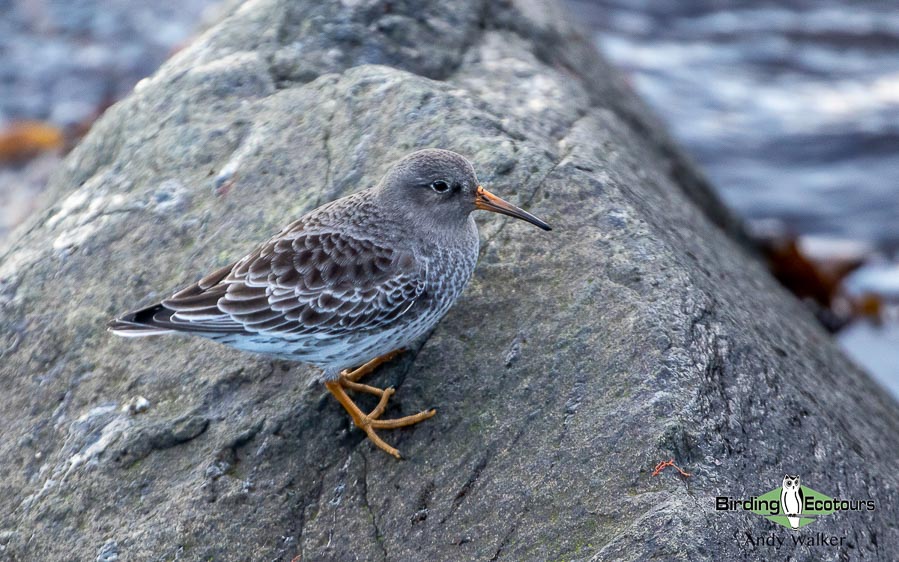
Day 9. Vistula Spit to Hel Peninsula via Bay of Gdańsk
In the morning (weather permitting), before our journey west to the Hel Peninsula, we will visit a bird banding (ringing) camp located close to our hotel in Krynica Morska. “Operation Baltic” is the oldest bird banding camp in Poland and one of the most famous in Europe. In October there is a huge movement of birds here, and it can be impossible to predict what might be caught in the nets. Apart from abundant Common Chiffchaffs, Song Thrushes and Common Blackbirds, it is highly possible to feast our eyes on a Bearded Reedling (Tit) or Red (Common) Crossbill, or perhaps something even rarer like an Asian Phylloscopus warbler!
Continuing west, we will visit an area that is extremely popular with Polish birders and as a result, an extensive reporting network has been set up. We will have access to this network which should hopefully make birding the area a lot of easier. One site we will be sure to visit is the Beka Natural Reserve, part of the Bay of Gdańsk, directly opposite the Hel Peninsula. This is another bird-rich area where we should come across species we have seen already, plus potential new species like Barnacle Goose, Corn Bunting, and Little Gull. Our visit should also be well timed to spot the first returning White–throated Dippers and Grey Wagtails, that can be found on fast-flowing streams around Gdańsk city during the non-breeding season.
Overnight: Hel Peninsula
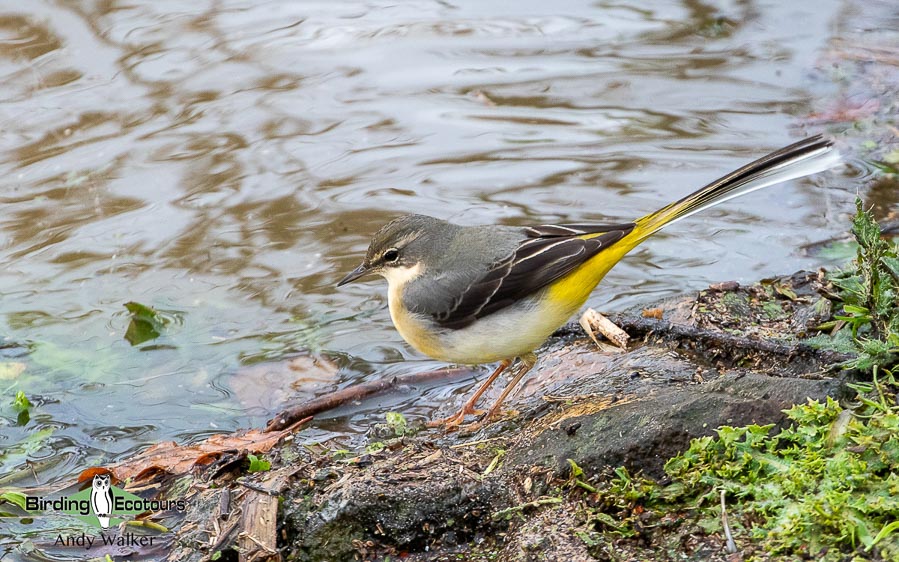
Days 10 – 11. Birding Hel Peninsula
We will spend two full days on the Hel Peninsula which is one of the best places to observe birds in Poland, and the best spot to observe national and European vagrants. During our stay we will visit multiple sites in the immediate area for a wide range of species.
The end of the peninsular (Hel Cypel) is the best spot for migrant passerines. In the pine forest and sea buckthorn bushes we will look for Twite, Brambling, Redwing, Common Redpoll, Lesser Redpoll, and Common Chaffinch. This area is also the best in Hel for finding rare passerines, and its recent record is simply astounding. Rare, though regularly observed, vagrants here include Yellow–browed Warbler and Little Bunting, while even rarer species (though possible during the time of our tour) include Radde’s Warbler, Siberian Stonechat, Desert Wheatear, Dusky Warbler, Parrot Crossbill, Blyth’s Pipit, and Red-throated Pipit. On top of this, will be many of the more common species we will have seen over recent days, but there really is a chance for us to find almost anything here and we will need to check every bird carefully, it will be an exciting experience!
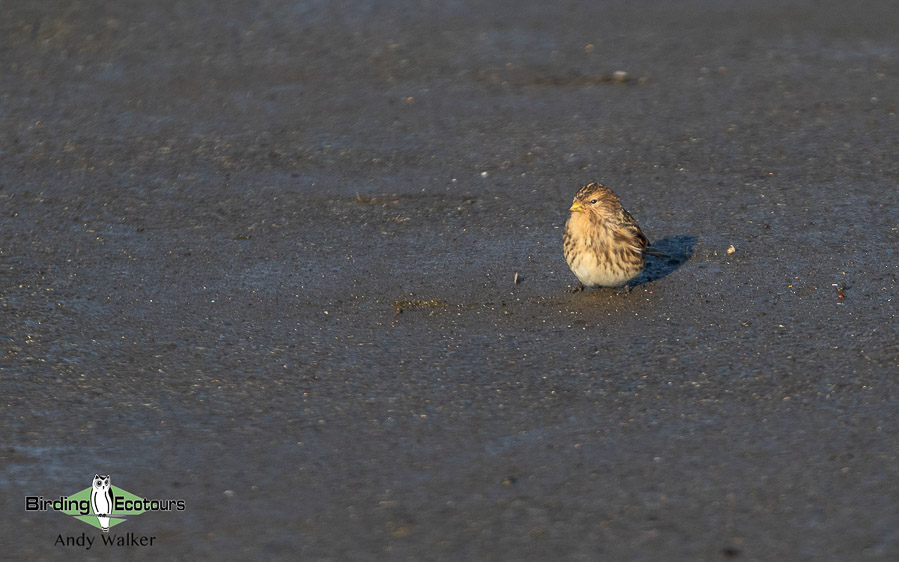
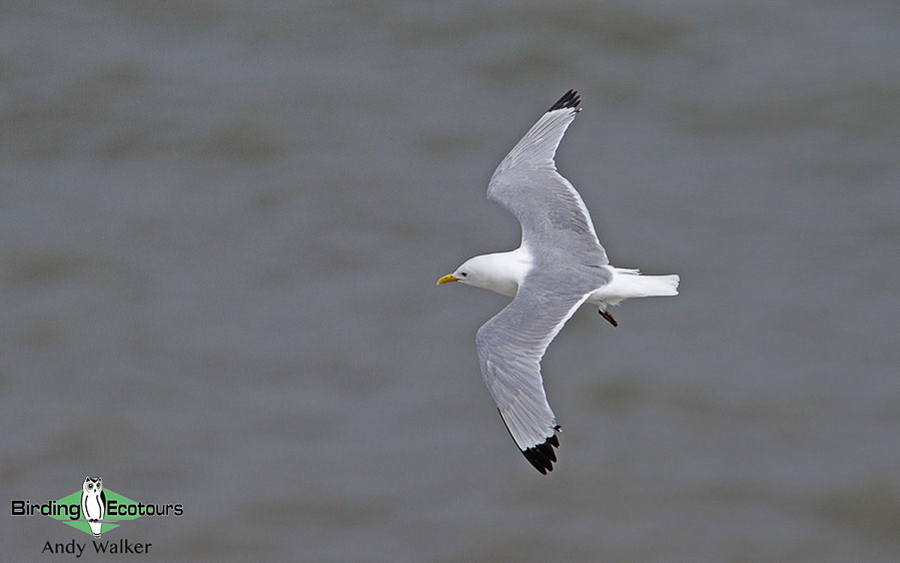
In the neighboring harbor and its surroundings we will focus on waterbirds including Common Eider, Velvet Scoter, Common Scoter, Red-breasted Merganser, and Sandwich Tern. On the rocks, Purple Sandpiper and European Rock Pipit can also be observed. In the evenings we will also look for Razorbill and Common Murre (Guillemot) that should be moving between the Baltic Sea and the Bay of Gdańsk. With extreme luck, we may be also able to observe the scarcer Black Guillemot or Black-legged Kittiwake here too.
Grasslands near the Hel military beach provide great foraging opportunities for a range of geese, including Tundra Bean Goose, Brant (Dark-bellied Brent) Goose, and Barnacle Goose. Flooded areas around a water treatment plant attract species like Jack Snipe and Short-eared Owl, but also passerines like Common Reed Bunting, Yellowhammer, Common (Siberian) Chiffchaff, and Lesser Whitethroat.
In the wider area, the abandoned airport in Jastarnia consists of low vegetation, which is suitable habitat for a range of passerines seeking much needed food, like Woodlark, Eurasian Skylark, Meadow Pipit, Snow Bunting, and Lapland Longspur (Bunting). The taller and denser vegetation here is also a good area to find rare passerines like Dusky Warbler, Yellow-browed Warbler, and Pallas’s Leaf Warbler.
The final evening meal of the trip will be the time to consider the “bird of the trip”, but it is likely to be a tough call! As with every night of the tour (and all our tours), the leader and local guide will be on hand to help with any last-minute questions on anything we have seen during the tour as we complete our bird list for the final time.
Overnight (two nights): Hel Peninsula
Day 12. Transfer to Gdańsk airport where the tour concludes
Sadly, all good things must come to an end and this morning, after a final local birding session, we will transfer to Gdańsk airport for the end of the tour.
After a two-hour journey we will arrive at Gdańsk airport in time for your afternoon flight home.
Overnight: Not included
Please note that the itinerary cannot be guaranteed as it is only a rough guide and can be changed (usually slightly) due to factors such as availability of accommodation, updated information on the state of accommodation, roads, or birding sites, the discretion of the guides and other factors. In addition, we sometimes must use a different international guide from the one advertised due to tour scheduling.
Download Itinerary